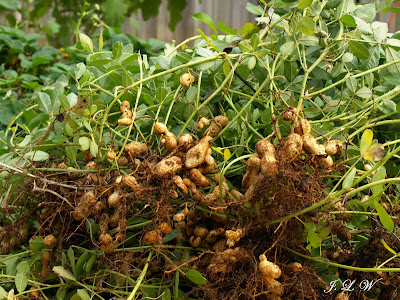I haven't given the dirt in my garden the attention it deserves. I spend most of my time focusing on the veggies, picking off pests, and pulling weeds. But none of this would be possible without the soil. We need a soil appreciation day, so this weekend is my debut of soil appreciation. To appreciate something, you need to know and understand it. So, I broke out some soil testing kits. I would love to test every raised bed, but not possible. Therefore, I picked the raised bed where corn grew well and the adjacent bed where the corn did not do so well and produced mini corn. The soil was not the only variable. The good corn bed was planted in spring and the bad corn bed was planted in summer.
pH:
The pH of the soil measures its acidity. Neutral is 7, basic is greater than 7, and acidic is less than 7. Having acidic soil makes nutrients such as phosphorus, nitrogen and potassium less available for the plants. Silly me took these pictures under a florescent light in the kitchen, which makes it a bit difficult to tell the true colors. The test on the left was greener (pH 6.5) than the one on the right (pH 6.). The good corn bed was the 6.5. Overall a pH of 6.0 - 6.5 is a good range for most veggies, so no lime additions in my future.
Potassium (K):
I switched things up and now the poor growing corn bed is on the left with adequate levels of K and the good corn growing bed has sufficient K. Potassium is important in plants for water transport and withstanding extreme temperatures and regulating water during droughts. Looks as though K is at OK levels, but a bit lower for the soil that grew the mini corn.
Phosphorus:
Phosphorus is important for new growth and cell division. Looks as though the soil in both beds have plenty of phosphorus.
Nitrogen:
Nitrogen has many important roles within plants. It is a structural component, a part of chlorophyll, needed for many proteins, and an important component for metabolism. Without nitrogen, plants would not survive. My expectation was that nitrogen was lacking in the bed where the corn performed poorly because corn needs lots of nitrogen. However, my nitrogen test was not very helpful. My samples appear orange rather than purple as shown on the scale. I'm not sure what to make of this test. The color does appear similar for both beds, but I don't know how to translate to nitrogen levels.
I hope after this weekend my soil feels a little less neglected. I'm trying to show my dirt more love by adding manure and leaves this fall along with cover crops. Nothing like happy soil to produce happy veggies!
I hope you can find some time to appreciate your soil!
















































